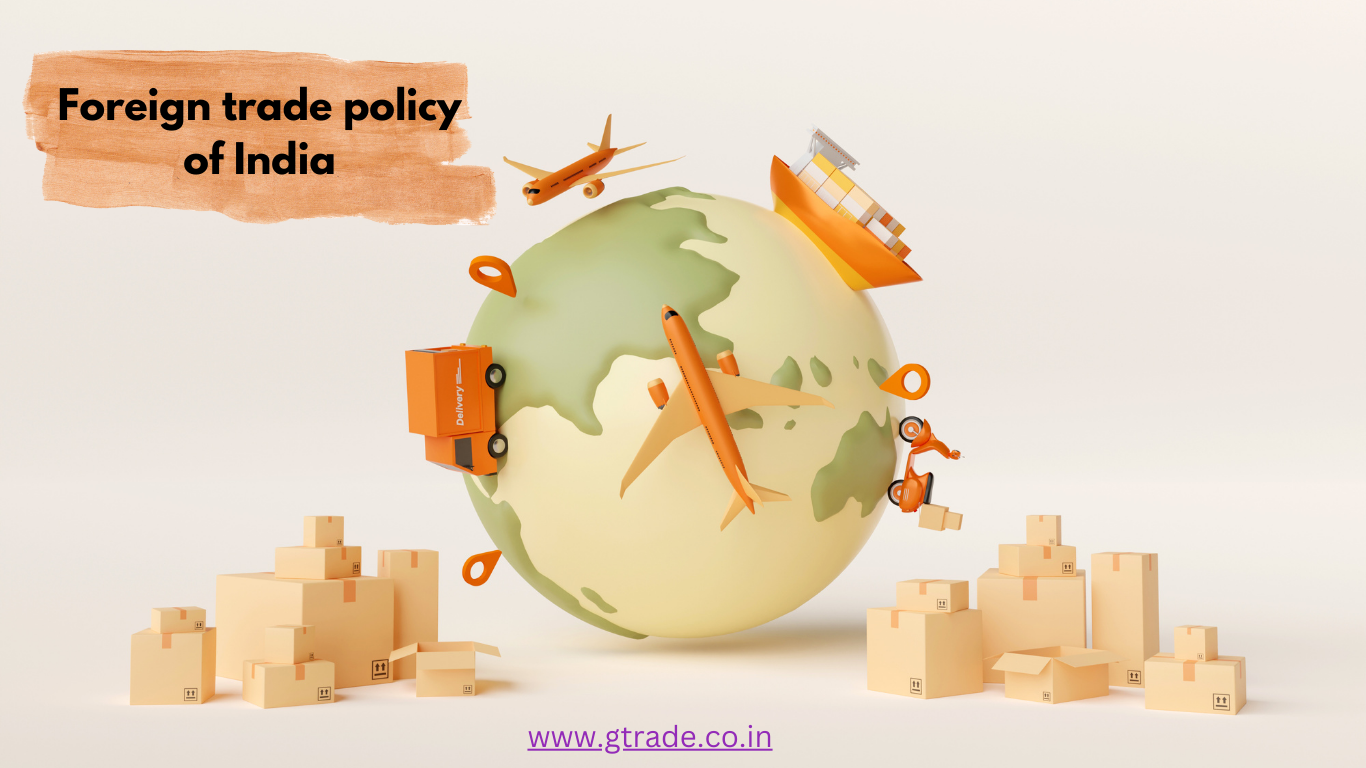Road ahead for Indian foreign Trade policy. This year, India’s Commerce and Industry Minister, Piyush Goyal, presented the new foreign trade policy for 2023-28 and set an ambitious goal to achieve US$2 trillion in exports by 2030. The policy included new initiatives that directly benefit Indian SMEs seeking to expand their reach and sell more products or services globally.
iNDIA & THE WTO ASCM AGREEMENT

INDIA’S TRADE OVERVIEW
Being a member of WTO, India is governed by major WTO agreements, when doing international trade with foreign countries. ASCM is an agreement under the WTO, which influences the Indian foreign trade policy to comply with international regulations and regulatory bodies involved in trade.
ASCM – is an Agreement on subsidies and countervailing measures under the WTO
The SCM Agreement contains a definition of the term “subsidy”: a financial contribution by a government or any public body within the territory of a member which confers a benefit.
What are the different types of subsidies under SCM Agreement?
There are six primary categories of subsidies, divided by purpose:
- export subsidies
- subsidies contingent upon the use of domestic over imported goods,
- industrial promotion subsidies,
- structural adjustment subsidies,
- regional development subsidies
- research and development subsidies.
what are prohibited subsidies?
There are two types of prohibited subsidies –
subsidies dependent upon export performance and those contingent upon the use of indigenous content over imported goods.
What elements must be present for a subsidy to be covered by SCM Agreement
Only 4 “specific” subsidies are under the purview of SCM Agreement disciplines.
| a. Enterprise-specificity: A country’s government targets a specific company or companies for subsidization. | |
| b. Industry-specificity: A government targets certain sector or sectors for subsidization. | |
| c. Regional specificity: A government targets producers in particular areas of its territory for subsidization | |
| d. Prohibited subsidies: A government targets export products or goods using native inputs for subsidization. |
what are Export subsidies?
export subsidies limited to four situations: (i) product-specific reduction commitments within the limits stated in the schedule of the WTO Member. (ii) any excess of budgetary outlays for export subsidies. (iii) export subsidies consistent with the special and differential treatment provision for developing countries. (iv) export subsidies other than those subject to reduction commitments provided that they are in conformity with the anti-circumvention disciplines of Article 10 of the Agreement on Agriculture.
what are Actionable subsidies?
These subsidies are not barred, but countries could take ‘countervailing measures’ against these subsidies. For a subsidy to be actionable, 3 conditions should be present –
a. Injury to domestic industry due to subsidized imports from another country.
b. There is serious prejudice arising as a result of adverse effects (e.g., export displacement) in the market of the subsidizing member or in a third country market. For instance, if India starts subsidizing its textile sector severely, then China can claim that this subsidy is causing serious prejudice to its textile industry.
c. Nullification or impairment of benefits accruing under the GATT, 1994 by increase in subsidies.
.Against such subsidies, members can take countervailing measures, such as imposing countervailing duties or anti-dumping duty. These can only be done in a transparent manner and a sunset period should be specified. Sunset clause under the agreement requires that a countervailing measure must be terminated after five years, unless it is determined that continuation of the measure is necessary to avoid the persistence or recurrence of subsidization and injury.
Why are export subsidies prohibited?
Export subsidies provide an unfair competitive advantage to recipients, and WTO rules expressly prohibit them. A limited exception to this rule is for specified developing countries that may continue to provide export subsidies temporarily until they reach a defined economic benchmark.
What are countervailing measures? When should countervailing measures be applied?
Countervailing Duty – It is levied on imported goods to counterbalance subsidies provided by the exporter country.
Countervailing duties can only be imposed if the investigating agency of the importing country determines that the imports of the product in question are subsidized and are injuring a domestic industry.
For example, in March’19, the Ministry of Commerce & Industry, Government of India, recommended the imposition of countervailing duty on imported Chinese pneumatic tires.
what is Anti-Dumping? when should anti-dumping duty applied?
Anti-Dumping Duty – Sometimes countries resort to subsidize production or exports so heavily that exporters are able to sell goods below domestic price or production cost in international markets. Anti-Dumping Duty is aimed at checking such subsidization and protecting the interests of the domestic industry of the importing country.
For instance, in January’19, India imposed anti-dumping duties on 99 Chinese products, including chemicals & petrochemicals, pharmaceuticals, fibers & yarn, rubber & steel items. Similarly, in April’19, it imposed an anti-dumping duty on solar cell components from China, Malaysia, Saudi Arabia & Thailand.
How does subsidy protect an economy from international competition?
Subsidies make those goods cheaper to produce than in foreign markets. This results in a lower domestic price. Both tariffs and subsidies raise the price of foreign goods relative to domestic goods, which reduces imports.
Who benefits the most from a subsidy?
Producer Impact of a Subsidy
Producers are made better off by the subsidy. In general, consumers and producers share the benefits of a subsidy regardless of whether a subsidy is directly given to producers or consumers.
Who imposes countervailing duty in India?
The following government agencies are tasked to administer the countervailing legislation: * Department of Trade and Industry-Bureau of Import Services (DTI-BIS) in the case of industrial goods, or Department of Agriculture (DA) in the case of agricultural products.
Is countervailing duty refundable?
A refund will be paid only if the duty assessed as payable on all of the imports over the importation period is less than the total duty actually paid on those imports.
Why WTO is against Indian subsidies?
India is involved in a number of trade disputes at the WTO. US has challenged India’s export subsidy schemes like MEIS, citing that the country has crossed the US$ 1,000 GNI threshold for the third successive year and can no longer provide such subsidies. India’s subsidies for sectors like sugar, fisheries and solar panels as well as import duties for sectors like electronics, iron and steel have been challenged by other countries at the forum. The US has also challenged India’s retaliatory tariffs on 28 products.
However, Commerce and Industry Minister Shri Piyush Goyal said in a written reply to the Lok Sabha that India is not obliged to implement recommendations the World Trade Organization’s dispute panel has made about its export promotion schemes. The panel, in its October 31, 2019 report ruled that India’s export-related schemes (including for special economic zones or SEZ) are in the nature of prohibited subsidies under the Agreement on Subsidies and Countervailing Measures and are inconsistent with WTO norms. The country had appealed at the WTO’s appellate body after it was given 180 days to withdraw the SEZ scheme.
“Due to non-functioning of appellate body (of the WTO’s dispute settle mechanism), the appeal has been kept in suspension. Till the appeal is disposed of, India is under no obligation to implement the recommendations of panel,” the minister stated.
How do subsidies affect inflation?
Subsidies have to be financed by the government, and therefore they may cause larger deficits, thus contributing to the inflationary process.
What is the economic impact of subsidies?
The general impact of subsidies is that they make it easy for firms to produce certain goods. After all, they’re being assisted with free cash or tax pardons. These tax pardons or cash payments reduce the production expenses producers have to bear. In the end, consumers will be paying less for the subsidized product.
Is countervailing measures a trade barrier?
Antidumping (AD) and countervailing (CV) measures have become popular substitutes for traditional trade barriers, which are gradually being reduced in the course of regional and multilateral trade liberalization.
How do subsidies affect exports?
The subsidy often involves a guaranteed minimum payment for output earmarked for exporting to other countries. The subsidy might also be a payment to lower the costs of manufacturers so that they can then reduce the prices of their exports when priced in an overseas currency.
what is Agreement on Agriculture ( AoA) in SCM?
Designed to remove trade barriers and to encourage transparent market access AoA stands on 3 pillars: Domestic Support– subsidies such as guaranteed minimum price or input subsidies which are direct and specific to a product. This can be divided into:
a) Green Box – Subsidies which are not or least market distorting. It includes measures such as income-support payments, safety-net programs, payments under environmental programs and agricultural research and development subsidies. In the case of developing countries, special treatment is provided in respect of governmental stockholding schemes for food security purposes and subsidized food prices for urban and rural poor.
b) Blue Box – These production limiting subsidies cover payments based on acreage, yield or number of livestock in a base year. The government is given the room to fix ‘targets price’ if the ‘market prices’ are lower than the farm prices. EU has been actively using this method.
c) Amber Box – Those are trade distorting subsidies which need to be curbed. They contain a category of domestic support that is scheduled for reduction based on a formula called the “Aggregate Measure of Support” (AMS). This refers to the money spent by governments on agricultural production, except for those contained in the Blue Box, Green Box and ‘de minimis’.
In addition to these subsidies, there is a ‘de-minimis provision’, which allows member countries to maintain trade distorting subsidies or ‘Amber box’ subsidies. It is 5% of the total value of agricultural output for the developed countries and 10% of total value of agricultural output for the developing countries.
what is peace clause?
Peace Clause is a product of the Bali Summit. Article 13 of AOA contains a “peace clause” which controls the application of other WTO agreements to subsidies. According to the provisions, Green Box domestic support measures cannot be the subjected to countervailing duty action or other subsidy actions. Also, they cannot be subjected to actions based on non-violation nullification or impairment of tariff concessions under the GATT.
What is market access agreed under WTO rules?
Market Access requires that tariffs, which have been fixed (like custom duties) by individual countries should be cut progressively to facilitate free trade.It also encompasses removal of non-tariff barriers (quotas on import). India is a signatory to this agreement and has substantially reduced its tariffs. It only regulates exempted goods.
what is safeguard duty?
A Special Safeguard Mechanism (SSM) was designed as a safety valve, allowing developing countries to impose additional (temporary) safeguard duties in the event of an abnormal surge in imports or the entry of unusually cheap imports.
What are alternatives to subsidies?
One of the most commonly proposed subsidy alternatives is a premium support (or “voucher”) approach, in which the government pays enrollees a fixed dollar amount to buy insurance, and enrollees are responsible for premium costs above the fixed amount.

